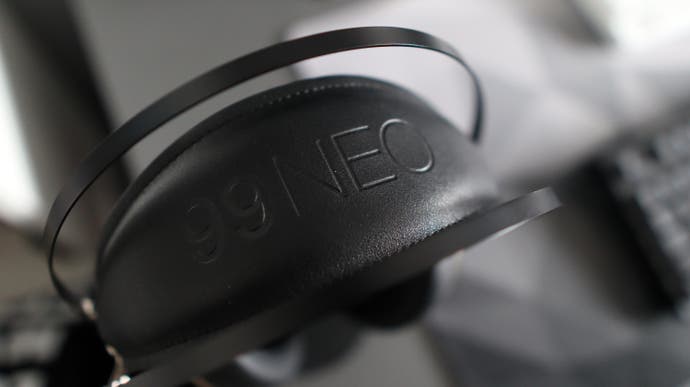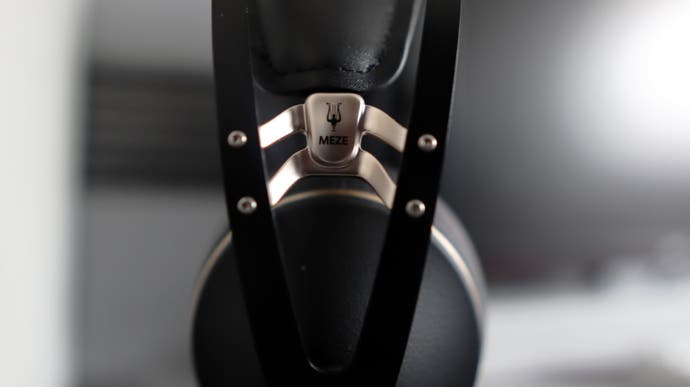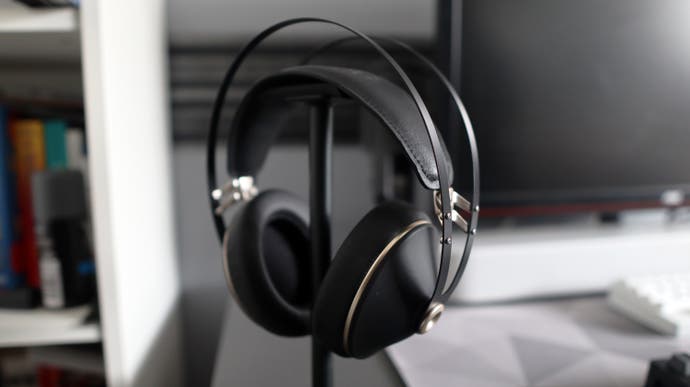Meze 99 Neo review: stylish headphones with a warm, detailed sound profile
These sure are some gorgeous cans.
I've always been a fan of underdog brands, and Romanian headphone maker Meze definitely counts as one. The company has been making wave amongst audiophiles, and today we have in for review their most affordable headphones - the £185/$199 Meze 99 Neos. These are far from cheap headphones at that price, but when the other end of Meze's range tops out at €4000 they're still relatively modest!
As you'd hope, the Meze 99 Neo still carry a certain air of authority with their black textured plastic earcups and zinc alloy headband. They actually look more expensive than they are, and their blend of high-quality metals and plastics goes some way to justifying the price point - though they of course don't look or feel quite as premium as the wooden earcups of the Meze 99 Classic. The headphones are well-built too, held together entirely by screws and metal fixings to ensure complete repairability. I haven't felt the need to test this, but reports elsewhere suggest they're easy to tear down.
What's particularly intriguing about the 99 Neos is their suspension-style self-adjusting headband. I've never been the biggest fan of this design, but the 99 Neos are effortless to wear - and this is helped by some seriously deep earcups and only moderate clamping force. These design features mean they outperform other headsets I've tested in recent months like the Grado SR325x and Sennheiser HD 660S2 in terms of comfort for me. The thick cushions also provide good passive noise isolation. This makes the 99 Neos a great set of travel headphones, and also benefits extended listening sessions.
I'm also going to give a shoutout to the fantastic hard case offered by Meze with the 99 Neos. It's one of the best hard cases I've had with a pair of headphones, and even holds a candle to the one featured on the Focal Bathys - a set of wireless cans that are four times the price of these Mezes. It also comes with some handy accessories, including adapters for different-sized headphone jacks to ensure vast compatibility, including an airplane adapter, so you aren't starved of stellar audio when on your flight to somewhere hot and sunny.

Meze says that the 99 Neos offer a warm, balanced sound profile, and I'd generally agree with this. They're a crisp, clear and detailed listen with plenty of warmth that makes listening to my usual playlist of tracks an absolute joy. A listen to a live cut of James Taylor's Walking Man exemplified this perfectly, with a generally smooth and refined sound that isn't harsh or sharp in any sense. This especially goes also for the presentation of the mid-range with a warmth and clarity to vocals that make everything from JT to Porcupine Tree's harsh Herd Culling a joy. Even in the sea of hammer-over-the-head rock, Steven Wilson's vocals remained clear. This warm, balanced sound profile certainly helps to make the 99 Neos suitable for a wide range of genres.
With this nuance in mind, the 99 Neos also have a well-rounded low end with plenty of weight to it. Rush's YYZ displayed plenty of nuance and refinement for what is a meatfest of lower-end frequencies and a song entirely based on Geddy Lee's strong, pounding bass runs. The bass isn't distorted at all, and while these headphones aren't bass-heavy monsters like others I've used and that some may prefer, it's still an authoritative listen with plenty to like about them. They are perhaps a little darker than other headphones I've tested, with a more pronounced low end, but that authoritative low end provides an excellent cushion for the rest of the music to live on. This is exemplified within a listen to Fish's Jumpsuit City from the Suits album - its bass line is pounding throughout the entire track, and the 99 Neos present it with reassuring oomph without it being overpowering.
YYZ also revealed the excellent stereo imaging and soundstage afforded by the 99 Neos with plenty of breathing room offered for instruments and a sense of sound coming from all sides. The marvellous soundstage was also revealed in a listen to The Style Council's Headstart for Happiness with the distant handclaps and clicks in the far left combining with the centrality of Paul Weller's acoustic guitar strums and vocals to make the 99 Neos sound fantastic. This great soundstage also proved to make them a great set of gaming headphones too, with accurate positioning of enemies and gunfire in the likes of a few rounds of CS:GO, too. The soundstage here is wide, although as closed backs, there inherently isn't as much room as found with open backs such as the Grado SR325xs I've tested.

With the general trend of the 99 Neos to offer a warm, detailed listen that's smooth, it makes sense that this also transitions through into their top-end, too. Sometimes with headphones, the treble can feel a little too harsh to the point where you wince, but that isn't the case with the 99 Neos. A listen to the new mix of Breathe from Pink Floyd's Dark Side Of The Moon characterises this perfectly with the clarity of Nick Mason's cymbal work, while the intricate twelve-string guitar sounds on The Eagles' Hotel California were presented with finesse and a smoothness also present in the wider song with the 99 Neos. The same also goes for the percussion and harsher synths on Gloria Estefan's Get On Your Feet on the song's instrumental break.
The fact is that, with an impedance of just 26 ohms, the 99 Neos will also sound great through pretty much everything. I bunged them straight into my MacBook, and they worked an absolute treat. However, you really get the best out of the 99 Neos when pairing them with a high quality DAC. It just makes everything even richer, and makes the 99 Neos such an engaging listen.
With all that then, £185/$199 for the Meze 99 Neos is actually a reasonable deal. If you're someone wanting a set of headphones that are stylish to look at, as well as wonderfully constructed and with a warm, detailed and almost reassuring sound profile, then these are an excellent choice. They've been a mainstay of Meze's range for at least the last six years, and now I've had the chance to test them, it's easy to see why.

